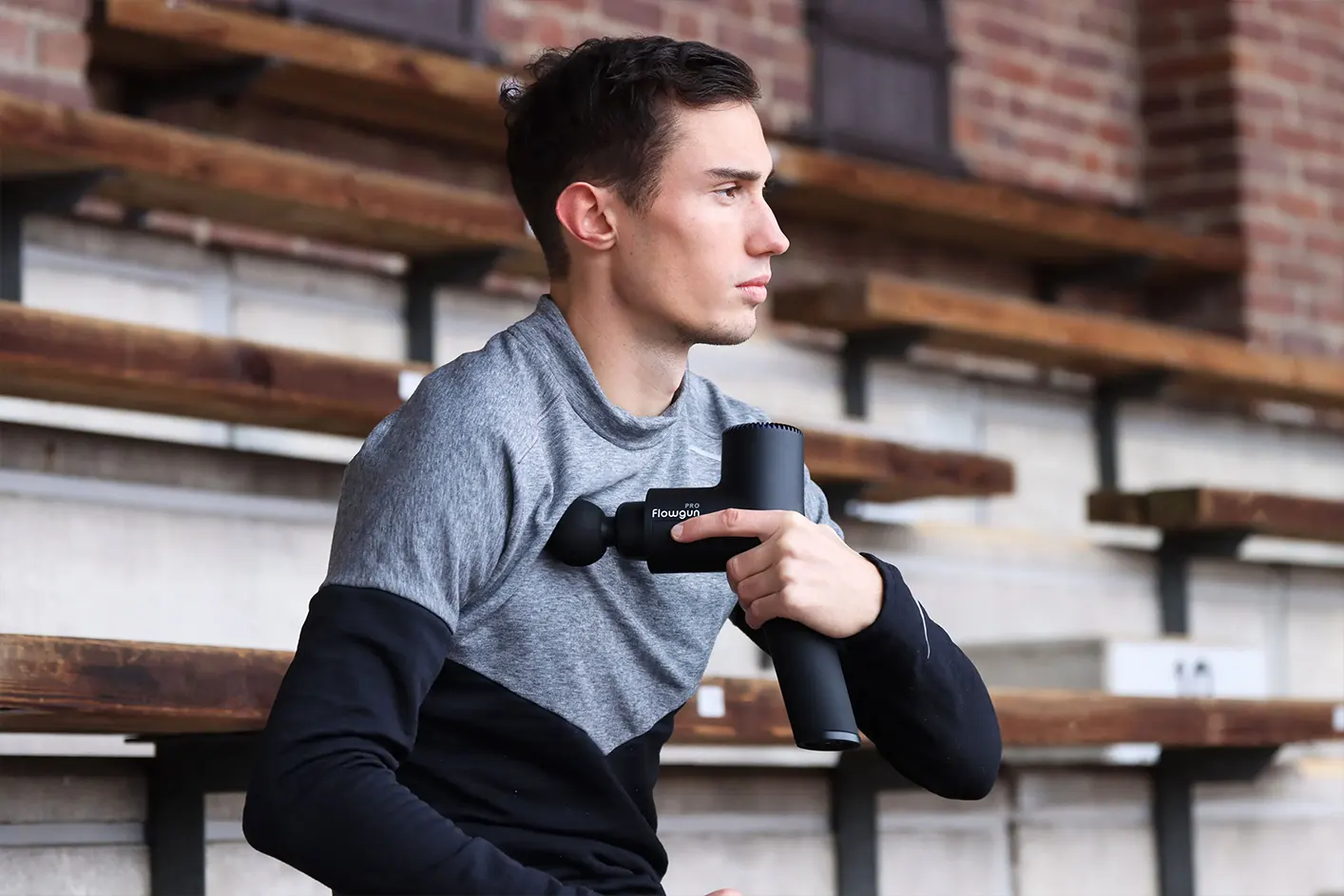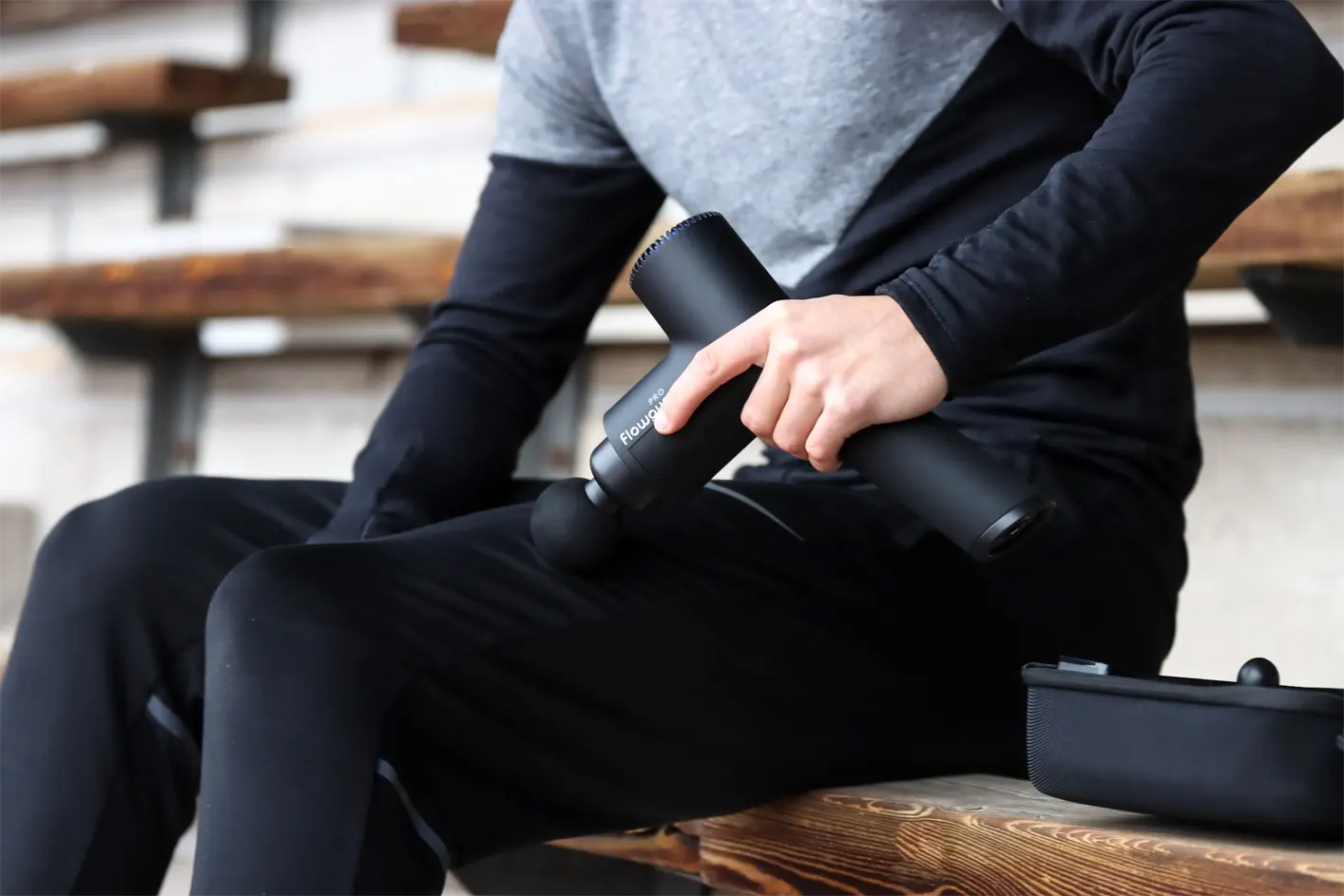Enzymes, vibrations, and range of motion
A new era has arrived, with products like Flowgun being used to relieve muscle pain and discomfort and treat soft tissue. But how does Flowgun work? What happens physiologically in the body when we massage sore or numb muscles with the Flowgun, for example? Flowgun uses a form of percussion therapy. With its unique head, the massage gun strikes the soft parts of the body (muscles, skin, muscle tendons) and has an effect that is close to massage but at a very high speed, similar to a form of vibration.
Vibration and Percussive Therapy
Vibration therapy has been shown to work as a method for reducing the enzyme lactate dehydrogenase in muscles, an enzyme that is found in all cells but is most prevalent in tissue that is “damaged” or, in this case, stressed (Imtiyaz et al., 2014). A decrease in this enzyme over time may indicate that healing has occurred earlier than it would have had the damage gone untreated. The same research also found that vibration therapy appeared to be an effective treatment method for reducing pain at the treatment site. Konrad et al. (2020) researched the effectiveness of 5 minutes of percussion therapy on the calf for increasing the range of motion in plantar flexion (tensing the calf and extending/contracting the ankle). It was shown to have good results in increasing the ankle's range of motion without compromising the amount of tensile force the muscle could generate. Konrad et al. (2020) suggest that the product could be an exemplary method for warming up and extending the range of motion without compromising force output.

Compared to other warm-up
Static stretching for 45 seconds or more per muscle group has been explicitly shown to limit strength output and explosiveness in muscles (Simic et al., 2012). The research and meta-analysis suggest that static stretching should not be used as a warm-up before explosive training and activities demanding strength. While it is true that not enough research has been done on the dynamics of percussion therapy specifically, research does exist on vibration (which is a reasonably similar function) and how it affects muscles. More research is needed to determine the precise impact in terms of performance and physiological findings.
Flowgun as a recovery method
The lack of research in this area means we do not have more specific data to pinpoint exactly what is happening in the muscle. However, research shows that similar therapies, such as vibration therapy, help the body recover and eliminate residues from a working force. Our clients also find that the treatment works well as it is perceived as pleasant and relaxing, and this is also true of our Naprapathy Ambassadors, who use Flowgun as a tool in their clinics.

Trainer's summary:
-
Flowgun can be a great alternative to stretching to warm up a muscle and increase the range of motion without losing strength output.
-
Depending on how you use it, it is highly likely that Flowgun can aid the physiological recovery of muscles after exercise/work.
-
Flowgun is effective and beneficial to our customers, athletes, and coaches as an applied tool and recovery method.
Referenser
Konrad, A., Glashüttner, C., Reiner, M. M., Bernsteiner, D., & Tilp, M. (2020). The Acute Effects of a Percussive Massage Treatment with a Hypervolt Device on Plantar Flexor Muscles’ Range of Motion and Performance. Journal of sports science & medicine, 19(4), 690–694.
Imtiyaz, S., Veqar, Z., & Shareef, M. Y. (2014). To Compare the Effect of Vibration Therapy and Massage in Prevention of Delayed Onset Muscle Soreness (DOMS). Journal of clinical and diagnostic research: JCDR, 8(1), 133–136. https://doi.org/10.7860/JCDR/2014/7294.3971
Simic, L., Sarabon, N., & Markovic, G. (2013). Does pre-exercise static stretching inhibit maximal muscular performance? A meta-analytical review. Scandinavian journal of medicine & science in sports, 23(2), 131–148. https://doi.org/10.1111/j.1600-0838.2012.01444.x

